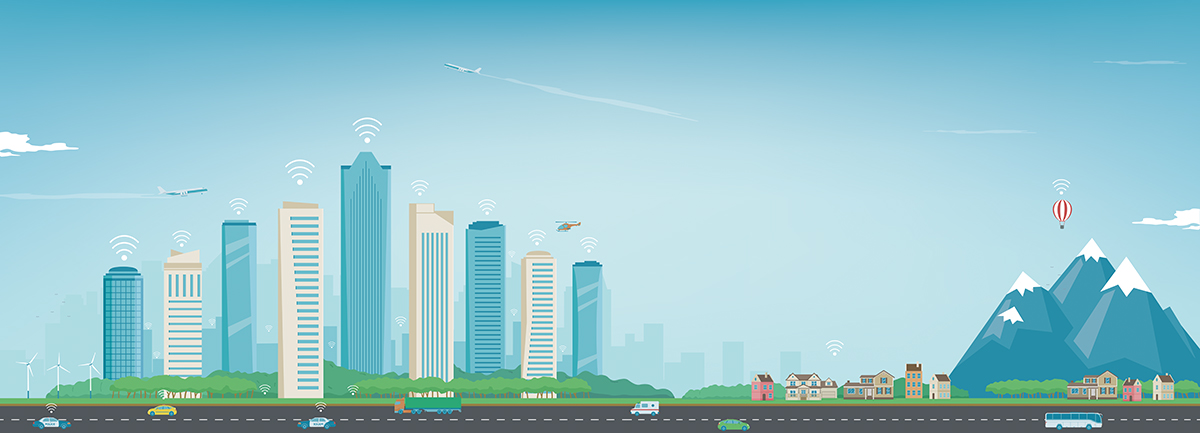Exploring the ways in which Digilife enhances connectivity in urban and rural areas, this article delves into the transformative impact of technology on community connectivity. From urban innovations to rural solutions, Digilife's initiatives are shaping the future of connectivity for all.
How Digilife Enhances Urban Connectivity
Digilife's initiatives have significantly improved urban connectivity by utilizing various technologies to bridge the digital divide in urban areas. This has led to a transformation in how people access and utilize the internet in cities.
Technologies Used in Urban Areas by Digilife
- Fiber-optic networks: Digilife has invested in laying down fiber-optic cables in urban areas, providing high-speed internet connections to residents and businesses.
- Wireless hotspots: The establishment of wireless hotspots in public places such as parks, libraries, and transportation hubs has made internet access more convenient for urban dwellers.
- 5G technology: Digilife has been at the forefront of implementing 5G technology in urban settings, enabling faster and more reliable internet connectivity for users.
Impact of Digilife's Initiatives on Urban Internet Access
Digilife's efforts have resulted in a significant improvement in internet access in urban settings. Residents now have access to faster internet speeds, which has enhanced communication, productivity, and overall quality of life. Businesses have also benefitted from reliable connectivity, enabling them to thrive in the digital economy.
Before and After Digilife's Interventions
- Before Digilife's interventions, urban connectivity was often limited by outdated infrastructure and slow internet speeds. Residents faced challenges in accessing online services and information.
- After Digilife's interventions, urban areas have experienced a digital revolution, with seamless connectivity and access to a wide range of online resources. The gap between urban and rural connectivity has narrowed, leading to a more inclusive digital society.
How Digilife Bridges the Connectivity Gap in Rural Areas

Rural areas often face challenges when it comes to connectivity, including limited access to high-speed internet, inadequate infrastructure, and higher costs for services. These limitations can hinder economic development, educational opportunities, and access to essential services for rural communities.
Digilife offers solutions tailored to the specific needs of rural communities, aiming to bridge the connectivity gap and empower these areas with reliable and fast internet access. By leveraging innovative technologies and partnerships, Digilife works towards creating sustainable connectivity solutions that can transform rural regions.
Case Studies of Successful Rural Connectivity Projects by Digilife
- Project A: In a remote rural area with limited internet access, Digilife implemented a community network initiative that provided affordable high-speed internet to residents. This project not only improved communication and access to online resources but also boosted local businesses and educational opportunities.
- Project B: Digilife partnered with local authorities in an underserved rural region to deploy a wireless broadband network, connecting schools, healthcare facilities, and government offices. This initiative enhanced telemedicine services, enabled distance learning, and facilitated efficient public service delivery.
- Project C: Through a collaboration with a non-profit organization, Digilife set up a mobile internet van that traveled to different rural communities, offering connectivity workshops and access to digital tools. This initiative empowered residents with digital skills and knowledge, fostering economic growth and social inclusion.
The Role of Digilife in Building Infrastructure for Connectivity
In order to enable connectivity in both urban and rural areas, the infrastructure plays a crucial role. This infrastructure includes a network of cables, towers, antennas, and data centers that facilitate the transmission of data and communication signals.
Infrastructure Requirements for Urban and Rural Connectivity
- Urban Areas: In urban settings, high-capacity fiber optic cables and 5G towers are essential for providing fast and reliable internet access. Data centers are also needed to store and process the vast amounts of data generated by urban populations.
- Rural Areas: In rural areas, the infrastructure requirements are more challenging due to the lack of existing infrastructure. Digilife focuses on deploying satellite internet, fixed wireless towers, and mobile network expansion to bridge the connectivity gap in these regions.
Collaboration with Local Governments and Organizations
- Digilife collaborates closely with local governments and organizations to obtain permits for infrastructure development in urban areas. This partnership ensures that the necessary approvals are obtained and that the infrastructure is built in compliance with local regulations.
- In rural areas, Digilife works with local communities and organizations to identify suitable locations for infrastructure deployment. By engaging with stakeholders at the grassroots level, Digilife can ensure that the infrastructure meets the specific needs of rural populations.
Long-Term Sustainability of Digilife's Infrastructure
- Digilife focuses on building robust and scalable infrastructure that can adapt to changing technology and user demands. By investing in future-proof technologies and regular maintenance, Digilife ensures the long-term sustainability of its infrastructure.
- The collaboration with local governments and organizations also plays a key role in the sustainability of Digilife's infrastructure. By fostering strong partnerships and community engagement, Digilife can address any challenges or issues that may arise, ensuring the continued operation of the connectivity infrastructure.
Empowering Communities through Connectivity Programs
In line with its commitment to bridging the digital divide, Digilife has launched various community engagement programs to empower urban and rural areas through enhanced connectivity.
Community Engagement Programs by Digilife
- Digilife's community engagement programs include workshops, seminars, and awareness campaigns aimed at educating residents on the benefits of digital connectivity.
- The company also partners with local organizations and schools to provide access to technology resources and training to community members.
- Through these programs, Digilife aims to empower communities to fully utilize digital tools for education, entrepreneurship, and social development.
Success Stories of Communities Benefiting from Digilife's Programs
- In a rural village where Digilife conducted training sessions, residents were able to establish an online marketplace for their locally-made products, boosting their income and market reach.
- In an urban neighborhood, youth empowerment programs led by Digilife resulted in the creation of a community-driven mobile app to address local issues and connect residents.
- Through these success stories, it is evident that Digilife's connectivity programs have a tangible impact on the economic and social development of communities.
Training and Capacity-building Activities by Digilife
- Digilife offers training sessions on digital literacy, online marketing, and cybersecurity to equip community members with the necessary skills to thrive in the digital age.
- The company also provides capacity-building workshops for local businesses and entrepreneurs to leverage digital tools for growth and sustainability.
- By investing in the training and capacity-building of communities, Digilife ensures that individuals are empowered to harness the full potential of connectivity for their benefit.
Last Word
In conclusion, Digilife's commitment to empowering communities through connectivity programs is evident in the stories of transformation and progress. By bridging the urban-rural connectivity gap, Digilife is paving the way for a more connected and inclusive society.
Top FAQs
How does Digilife contribute to improving internet access in urban areas?
Digilife implements cutting-edge technologies like fiber optics and 5G networks to enhance connectivity in urban settings.
What are the specific challenges rural areas face in terms of connectivity?
Rural areas often lack adequate infrastructure and internet service providers, making access to reliable connectivity a challenge.
How does Digilife collaborate with local governments to build infrastructure for connectivity?
Digilife partners with local authorities to identify infrastructure needs and implement sustainable solutions for urban and rural connectivity.







